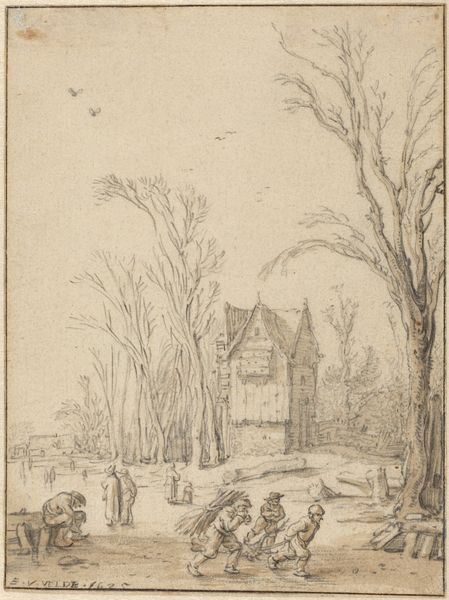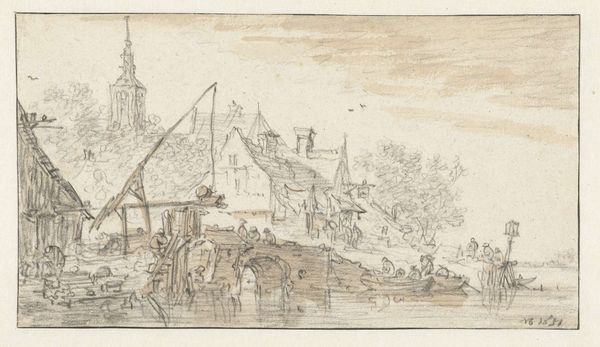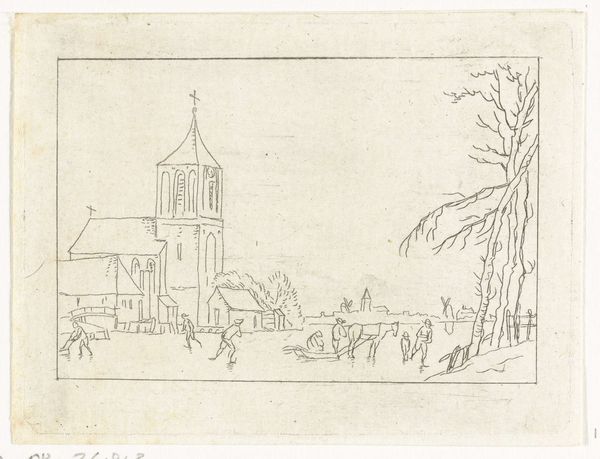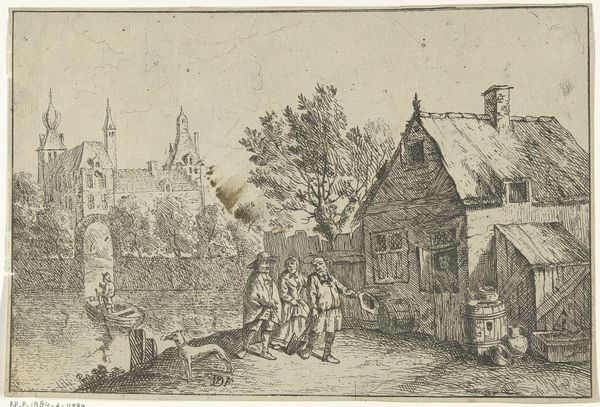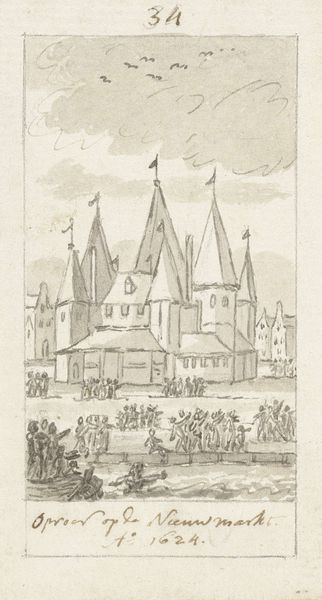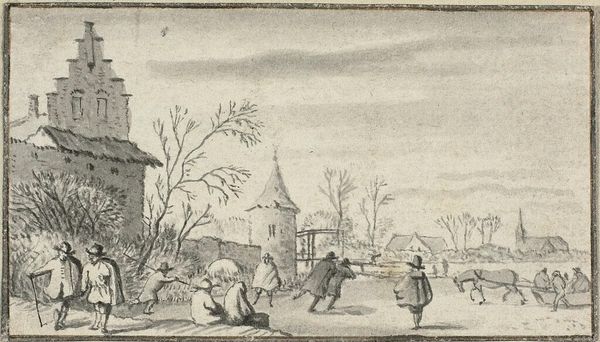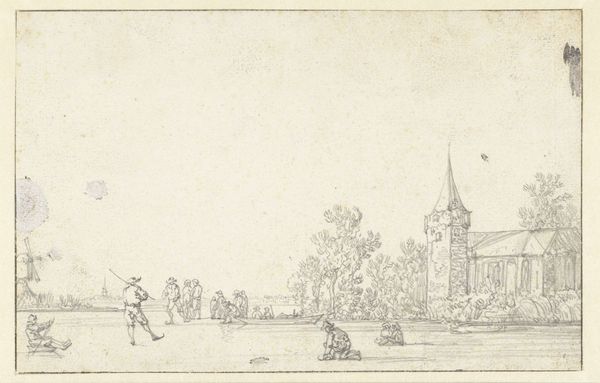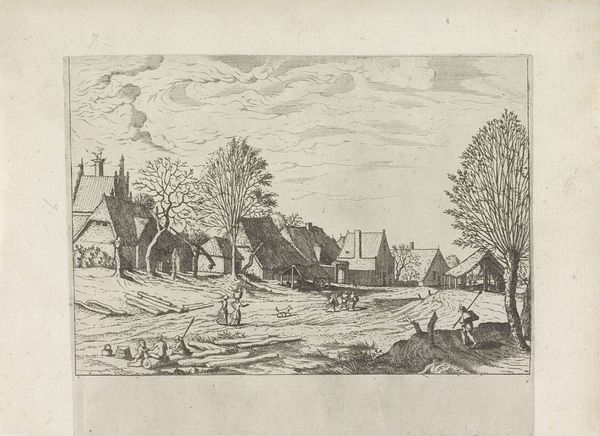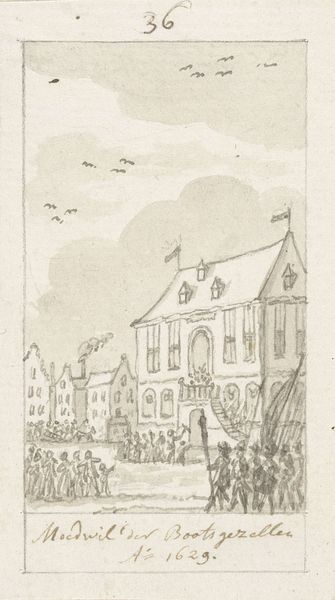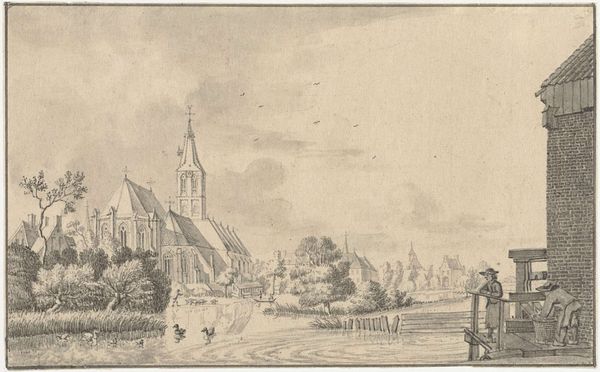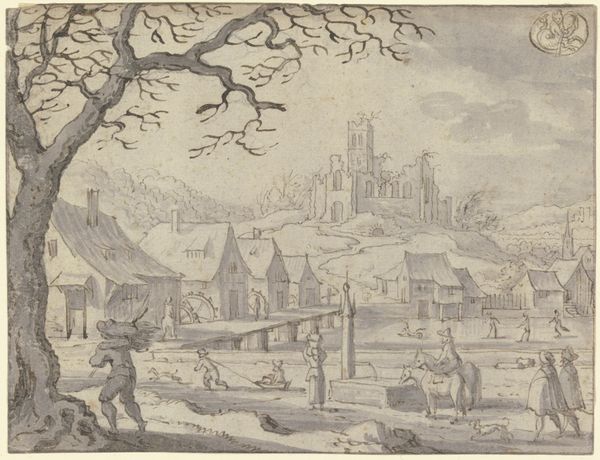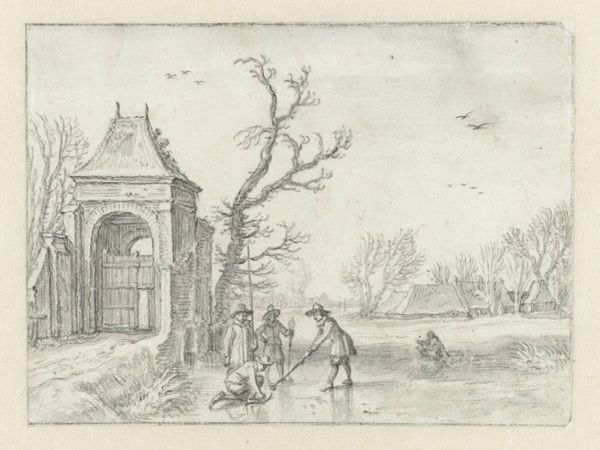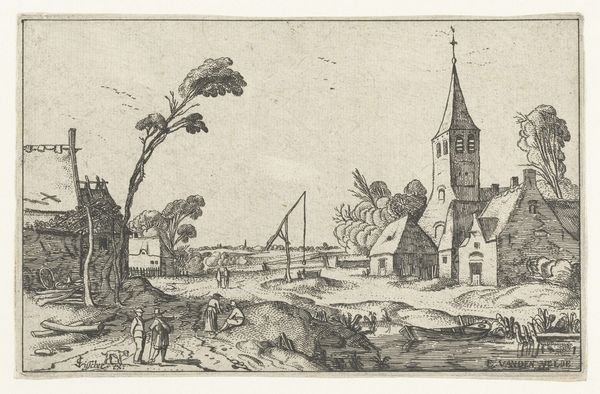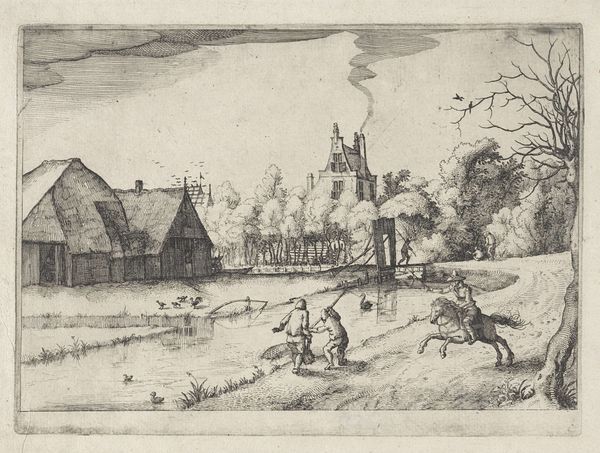
drawing, paper, ink
#
drawing
#
aged paper
#
toned paper
#
quirky sketch
#
baroque
#
dutch-golden-age
#
sketch book
#
landscape
#
paper
#
personal sketchbook
#
ink
#
sketchwork
#
pen-ink sketch
#
line
#
sketchbook drawing
#
genre-painting
#
storyboard and sketchbook work
#
sketchbook art
#
realism
Dimensions: height 182 mm, width 140 mm
Copyright: Rijks Museum: Open Domain
Editor: Here we have Esaias van de Velde’s “Januari,” a pen and ink drawing from 1629. It’s currently housed at the Rijksmuseum. There’s a remarkable immediacy to it – like a snapshot of daily life. How should we interpret the scene? Curator: It is tempting to read this drawing simply as a quaint scene of leisure. But consider the materials. Van de Velde chose relatively inexpensive paper and ink. This suggests a broader distribution and consumption pattern, doesn't it? Editor: You mean, not necessarily commissioned for the elite? Curator: Precisely. Also, note the *labor* depicted. While some figures are engaged in what appears to be play, others are hauling goods, their labor literally inscribed within the image. The materiality of ice, requiring specific conditions and seasonal work, should give us a framework of interpretation that reveals the complex, not only playful, scene of a Dutch winter. Editor: So you're saying that the choice of materials and the depiction of labor points to the socio-economic context of the time? Curator: Exactly. It allows us to consider not only the ‘what’ of the artwork, but the ‘how’ and ‘why’ of its production and reception within a burgeoning mercantile society. And consumption of images, what does this indicate about Dutch society? Editor: I see. It makes you think about the value of art, beyond just its aesthetic qualities, relating more to people's ordinary lives. Curator: And how the seemingly mundane is tied to larger systems of production and exchange. Editor: Thanks, I’ll definitely look at these sketches with a new perspective.
Comments
No comments
Be the first to comment and join the conversation on the ultimate creative platform.
